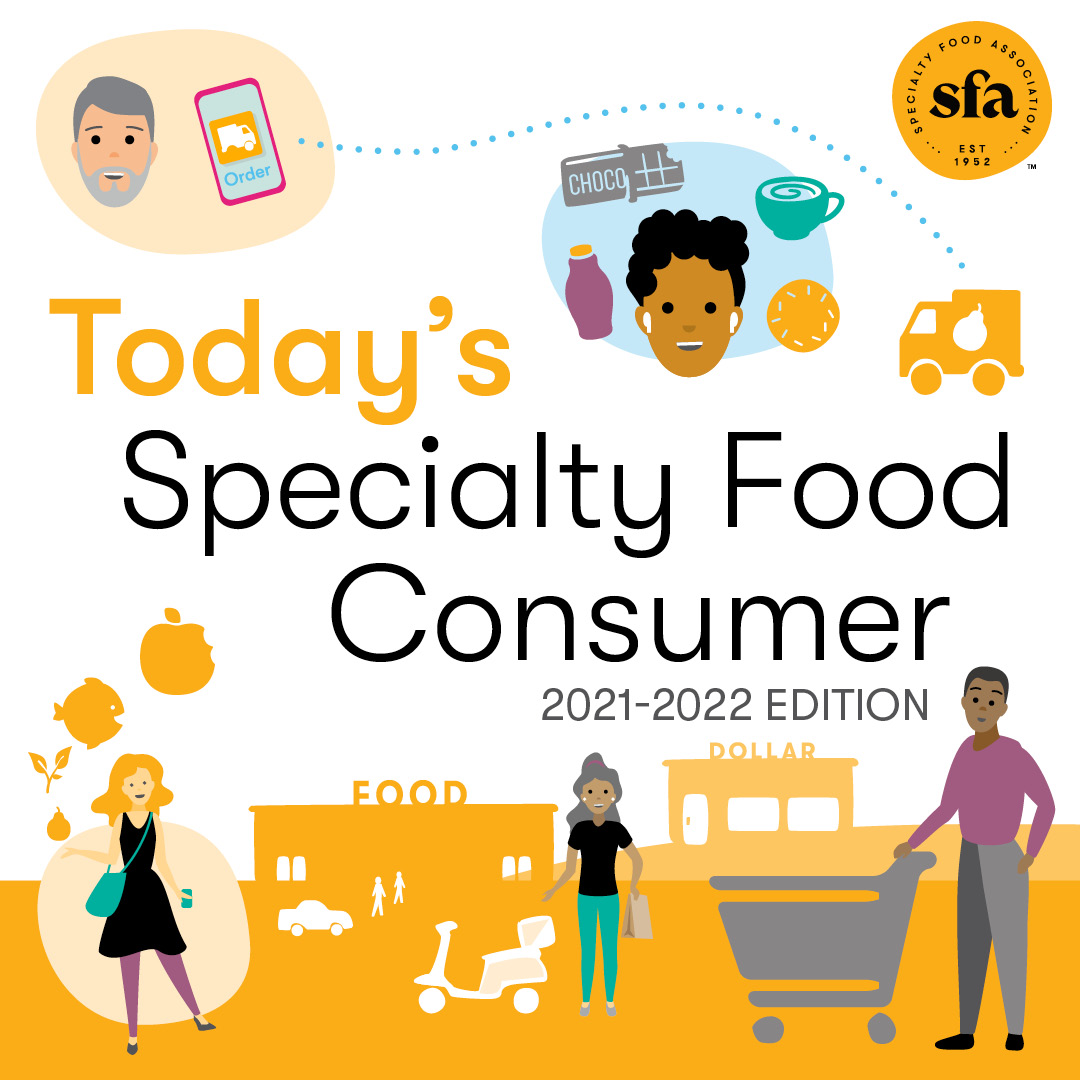Though the last three years have been tumultuous, the number of Americans purchasing specialty foods has held steady at between 72 and 74 percent, said research consultant David Lockwood, during Tuesday's Fancy Food 24/7 session SFA Research: Today's Specialty Food Consumer.
“Compared to before COVID what hasn't changed is how many people are buying specialty foods,” said Lockwood. “This is unusual since during the last 20 years, that number has gone up and down quite a bit … it shows that the industry has got people spending more, buying more categories, and being more accepting of the highest inflation we've seen in a lot of years.”
While demographics aren't that significant since such a large portion of Americans purchase specialty foods, said Lockwood, sweet spots include males, who are more likely that females to impulse buy, older millennials and members of Gen X, and families earning more than $75,000 per year. Following are 7 key takeaways from SFA's research:
1. Despite COVID, specialty food consumers weren't deterred in 2021. “We know the numbers in terms of sheer participation haven't changed but been really stable during the last three years,” said brand and retail consultant David Browne, during the session. “That's a really good indication of the market's strength.”
2. Sales are rising because more specialty food consumers are buying more categories. “That can't be understated as an ideal situation,” said Browne. “You have 16 or so categories that the average is buying in and there are more people entering the space all the time that may be buying as many or more than that.”
3. More than 8 in 10 adults who ordered online in 2021 are specialty food consumers. This is significant since 57 percent of all adults ordered online this year, up 76 percent vs. 2020. “Obviously a key target for specialty brands that are selling their products direct-to-consumer through online, is to understand that the vast majority of these consumers are specialty,” noted Browne.
4. Don't neglect brick-and-mortar. “Large formats are really key, but exploration into tertiary outlets like wine and liquor stores, which have a robust selection of specialty items and are growing rapidly, make great sense for specialty brands since some of the heaviest buyers like to shop them,” Browne said.
5. Get to know the heaviest specialty food consumers better. “They're very eager, curious, and want to see these products everywhere they shop,” said Browne.
6. Foodservice is an opportunity. “While foodservice will only slowly recover, specialty food consumers definitely want to see specialty foods in takeout and delivery, so it's really a key opportunity to get to know your regional takeout operations,” he said.
7. Specialty food consumers are far more engaged than non-specialty food consumers with special diets and new and emerging food trends. “They're really eager to find products that make the claims to meet their dietary needs,” Browne said. “Particularly the three youngest generations should be top of mind.”
The SFA's Today's Specialty Food Consumer report can be purchased at learning.specialtyfood.com.
Related: Runamok's Tejeda Wins Fast Pitch Friday Competition; Fancy Food 24/7: Week 2.

